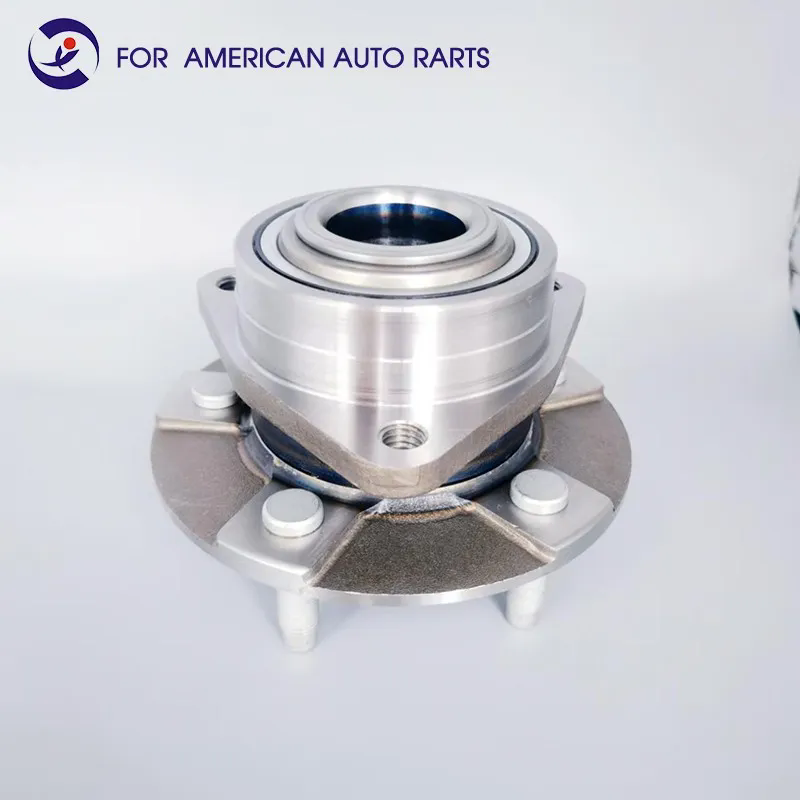What Makes the Wheel Hub Essential for American Cars?
2024-11-26
When it comes to the performance and safety of your vehicle, one component often goes unnoticed: the wheel hub. For American cars, this part is critical in ensuring smooth rides, proper wheel alignment, and dependable braking. But what exactly is a wheel hub, and why is it such an essential part of your car?
What Is a Wheel Hub?
The wheel hub is a key component of the wheel assembly that connects the wheels to the vehicle. It houses the wheel bearings and ensures the wheel rotates freely and efficiently while being securely attached to the car. In modern vehicles, many wheel hubs also integrate advanced technologies like ABS (Anti-lock Braking System) sensors for added safety and performance.
Why Is the Wheel Hub Crucial for American Cars?
1. Ensures Vehicle Stability
The wheel hub provides a solid connection between the wheel and the axle. A well-functioning hub maintains proper alignment, ensuring your car handles predictably and safely on the road.
2. Supports Smooth Wheel Rotation
The hub houses the wheel bearings, which minimize friction and enable smooth rotation of the wheels. Without this seamless motion, your car would experience uneven wear on tires and compromised fuel efficiency.
3. Enhances Braking Performance
For vehicles equipped with ABS, the wheel hub often integrates a sensor that monitors wheel speed. This sensor plays a critical role in preventing wheel lockup during braking, especially on slippery surfaces.
4. Withstands Heavy Loads
American cars, known for their durability and variety—ranging from sedans to heavy-duty trucks—require robust wheel hubs to manage their weight and cargo capacity. High-quality hubs are engineered to endure these demands without compromising performance.
How Do Wheel Hubs Vary Across American Car Models?
Wheel hubs are not one-size-fits-all. For American cars, the design and specifications of wheel hubs vary based on factors like:
- Car Type: SUVs, trucks, and sedans often use different sizes and materials for their hubs.
- Driving Conditions: Off-road vehicles may use more durable hubs to withstand rugged terrain.
- Technology Integration: Modern cars may feature advanced hubs with built-in ABS or traction control sensors.
What Are the Signs of a Failing Wheel Hub?
Recognizing the symptoms of a worn or damaged wheel hub can prevent costly repairs and accidents. Keep an eye out for:
- Grinding or Humming Noises: Often caused by worn-out bearings within the hub.
- Vibration in the Steering Wheel: Especially noticeable at higher speeds.
- Uneven Tire Wear: A misaligned hub can lead to irregular tire wear patterns.
- ABS Light Activation: A faulty hub sensor can trigger warning lights on your dashboard.
If you notice these issues, it’s crucial to have your wheel hub inspected and replaced by a professional.
How to Choose the Right Wheel Hub for Your American Car
When replacing a wheel hub, selecting the right part for your vehicle is essential. Here’s how:
- Match the Specifications: Ensure the hub matches your car’s make, model, and year.
- Look for OEM or High-Quality Aftermarket Options: Original Equipment Manufacturer (OEM) hubs guarantee a perfect fit, while reputable aftermarket brands can provide cost-effective alternatives.
- Check for Durability: Choose hubs made from strong, corrosion-resistant materials to handle American cars' rugged requirements.
- Consider Advanced Features: If your car has ABS or traction control, ensure the replacement hub supports these systems.
Why Invest in Regular Wheel Hub Maintenance?
Proactive maintenance can extend the life of your wheel hubs and improve your car’s overall performance. Regular checks for wear, keeping the bearings lubricated, and addressing minor issues promptly can save you from major repairs down the line.



